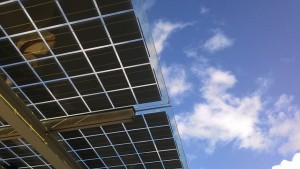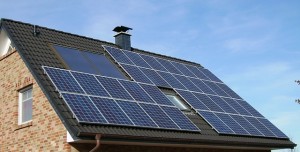 The world is looking frantically for green technologies to make our lives more sustainable.
The world is looking frantically for green technologies to make our lives more sustainable.
From an integrated control system for your home to smart clothes, modular smartphones, edible plates and sea bins that collect the rubbish of the sea, the Rubbish Please Company can easily say there is a huge rise in the interest and search for new environmental inventions.
However, are these green gadgets going to be enough to get us to the goal of 20% reduced emissions worldwide?
We’ll leave that for you to decide, meanwhile, we’ve gathered a list of the 5 green technology innovations that will restore your hope for humanity. We believe those will be the change-makers for the sustainable future we all wish for.
1: The Electric Car
This one will not be about Tesla cars, but about its new and uprising competitors.
We believe that having higher competition will make innovations happen faster and the end product (EVs) will cost less when there is over one powerful player on the market.
Think of how fast smartphone innovations have gone for the past few years.
Did you know: 25-30% of the annual emissions in the U.S. are generated from transport vehicles

Picture taken from https://www.ff.com (Faraday Future company)
The first electric car start-up we want to give props to is the California-based company, Faraday. Even their name seems like a challenge aimed at Tesla. Michael Faraday is a well-known scientist for his research and innovation in the fields of electromagnetism and electrochemistry.
The fact that Faraday focuses on producing an electric supercar with a 1000 horsepower engine (actually, 4 engines, 1 for each wheel) will make Tesla work even harder to maintain the first spot in this niche which on its turn will snowball the flow of innovation in this much-needed field of electric vehicles.
 The second contender in the EV market is Uniti who have a different, equally powerful approach – to work on user-friendliness and focus on target markets such as millennials who look for practicality and reliability. You can follow the development of this Swedish start-up here.
The second contender in the EV market is Uniti who have a different, equally powerful approach – to work on user-friendliness and focus on target markets such as millennials who look for practicality and reliability. You can follow the development of this Swedish start-up here.
A few decades might pass until electric vehicles are the dominant transportation worldwide, and until then, we hope the continuous development of low emission fuels such as cellulosic biofuels would serve as the perfect remedy for the unpleasant shift from oil-fuelled to green energy-fuelled transportation.
Did you know: cellulosic biofuels can be up to 80% more efficient (producing fewer emissions) than gasoline?
2. Zero Energy Building and 3D Printing
You might think 3D printers had their glory a few years ago. And you will be right, the initial worldwide buzz is over, however, now is the time when 3D printing becomes useful in big-scale, high-impact industries such as construction aiming to reduce builders’ waste to zero.
AMIE, a technology developed by SOM (Skidmore, Owings & Merrill LLP) uses recycled materials, on the other, it is designed to optimally “condense the many functions of a conventional wall system into an integrated shell – structure, insulation, air and moisture barriers, and exterior cladding” (SOM press release).
On top of all that, AMIE (Additive Manufacturing Integrated Energy) can produce enough energy to sustain its own consumption, and combined with a hybrid car, it can be used as a high-tech caravan. Pretty cool, huh?
 There are many sustainable building technologies gaining traction in 2017, to name a few – active solar and daylighting, solar-thermal cladding, bio-plastics, self-healing concrete (wow! to that one), low-energy building, super-insulation, passive ventilation, the list goes on.
There are many sustainable building technologies gaining traction in 2017, to name a few – active solar and daylighting, solar-thermal cladding, bio-plastics, self-healing concrete (wow! to that one), low-energy building, super-insulation, passive ventilation, the list goes on.
All of these are becoming the foundation of the so-called sustainable urbanism which hopefully will become yet another big factor in ‘building’ a future of zero-pollution.
Did you know: sustainability is the “development that meets the needs of the present without compromising the ability of future generations to meet their own needs.”
3. Solar Energy With a Twist!
Yes, yes, this one has been here for ages, and most of us already know what its drawbacks are – no sun, no energy!
That means that countries with low annual sunshine hours have no incentive to commercialise this energy source, making solar panel investors and companies salty.
Ironically, it is salt that is about to save and rejuvenate the trust in this green energy source.
 For example, thanks to liquid salt, companies which design and produce industrial scale solar panel plants, will need to construct six power plants instead of seven while retaining the same energy output of 4 million gigawatts per hour annually.
For example, thanks to liquid salt, companies which design and produce industrial scale solar panel plants, will need to construct six power plants instead of seven while retaining the same energy output of 4 million gigawatts per hour annually.
Moreover, molten salt has the ability to retain tremendous amounts of heat which are released to power conventional turbines during the high-consumption hours of the day, mostly after sunset. On top, according to experts, solar panels impact property value by far.
4. Water-generated Electricity in a Heartbeat
This one has been here for a while as well, yet there hasn’t been a water generator powerful enough to become a reliable substituent to the conventional energy sources we use today. The HiWave energy converter might be the answer. HiWave is a wave-harnessing technology that mimics the human heartbeat. Compared to other wave generators, it is lightweight and can harness any type of wave.

Picture from: www.innoenergy.com
Currently, the cost of production and maintenance, as well as the Levelised Cost of Energy (LCoE) has been too high for wave generators to successfully compete with conventional energy sources such as coal and oil. The average LCoE index of a water generator is between 0.30 to 0.50 EUR/kWh, too expensive for the average consumer to afford.
As explained by the creators of HiWave, by “having an oscillator with pneumatic pretension and a mechanical drive train with high natural frequency of oscillation” practically makes it five times more efficient than its predecessors and a realistic competitor on the energy market.
5. Development of AI (Artificial Intelligence)
This one is a bit of a long shot, a utopian, futuristic and abstract view of the future, but bear with me.
You might ask, how can AI help reduce carbon emissions? If we take the surprisingly accurate estimate of when Singularity (when AI surpasses humans in terms of intelligence) will happen according to Ray Kurzweil (2029), we can assume the total takeover of AI operated machines in the production of all products (maybe except artistic commodities) will happen in our lifetimes. We must point out that AI is as good as its programming.
 For example, the ‘smartest’ computer right now, IBM’s Watson, is getting over $100 million of financing only for a fleet of startups which all have one goal – to create applications for it which can be used in medical research, precision agriculture, data analysis, design and computation of projects in all fields of science and business, leading to an insurmountable number of new inventions and technologies. That, on its own, would make waste, pollution, disease, and other issues of today a distant memory of the past. Now isn’t that something to look for?
For example, the ‘smartest’ computer right now, IBM’s Watson, is getting over $100 million of financing only for a fleet of startups which all have one goal – to create applications for it which can be used in medical research, precision agriculture, data analysis, design and computation of projects in all fields of science and business, leading to an insurmountable number of new inventions and technologies. That, on its own, would make waste, pollution, disease, and other issues of today a distant memory of the past. Now isn’t that something to look for?





